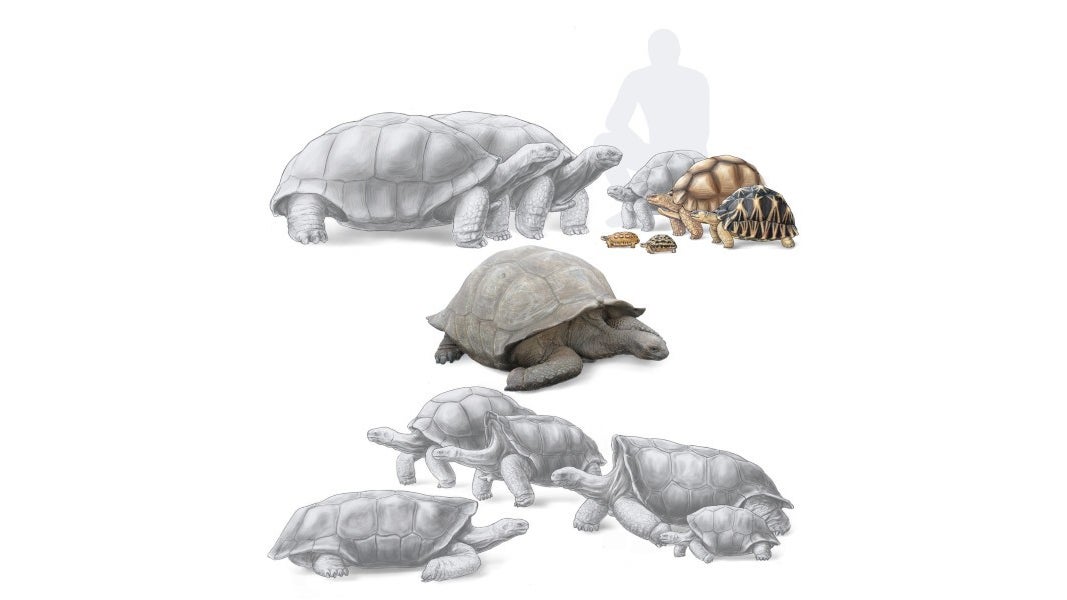

Most of the island tortoises of the Indian Ocean are now extinct (pictured in grey), with the majority of the remainder on the verge of being wiped out.
(Credits: Artwork-Michal Roessler; Photo-Massimo Delfino)
The quaint island of Madagascar, due to its remote location and geography, houses some of the world’s rarest biodiversity — including giant tortoises. These 600-pound (roughly 200-300 kilograms) creatures have helped shape the island’s ecosystem by maintaining the health of forests, reducing the risk of fire through grazing, and dispersing countless seeds.
The reptiles first evolved on the African mainland around 40 million years ago, and later, some crossed paths with the island after being drifted by the Indian Ocean waters. With no humans or large carnivores to compete with, the giant tortoises ended up taking over Madagascar.
But today, thanks to climate change and human infringement like poaching and habitat degradation, most species native to the island are right on the brink of extinction, if not already extinct.
While bringing them back to life is not possible (at the moment), researchers have managed to reconstruct their DNA to understand not just their evolutionary history, but also the environment of Madagascar prior to human influence.
The research analysed ancient DNA data of the bygone giant tortoises using bones and museum specimens originating from Madagascar and neighbouring islands. By combining the genomic sequences with prior data on tortoise lineage and radiocarbon dating, the scientists could finally join the dots on how the giant tortoises must have migrated to various Indian Ocean islands.
For instance, the puzzle pieces revealed that the now-extinct Cylindraspis lineage from Mascarene probably left Africa in the late Eocene (more than 33 million years ago) after humans colonised the island, and ended up residing on the now-sunken Réunion volcanic hotspot.
From there, the species spread to the surrounding islands and diverged into five Mascarene tortoise species between 4 million and 27 million years ago.
The DNA analysis of one of the remains also led to the discovery of an entirely new but already extinct tortoise species, Astrochelys rogerbouri, whose shell length was about half a metre. Scientists suggest that this could have been among the island’s large tortoises.
“Radiocarbon dating of the bone revealed that this species lived on Madagascar as late as the Middle Ages and, like the giant tortoises, must have disappeared after the arrival of humans,” said study author Dr Uwe Fritz from the Museum of Zoology in Dresden, Germany.
Though the species may have gone extinct over 600 years ago, a clearer understanding of Astrochelys rogerbouri could help save its living relatives.
This study was published in the journal Science Advances and can be accessed here.
**
For weather, science, space, and COVID-19 updates on the go, download The Weather Channel App (on Android and iOS store). It’s free!














